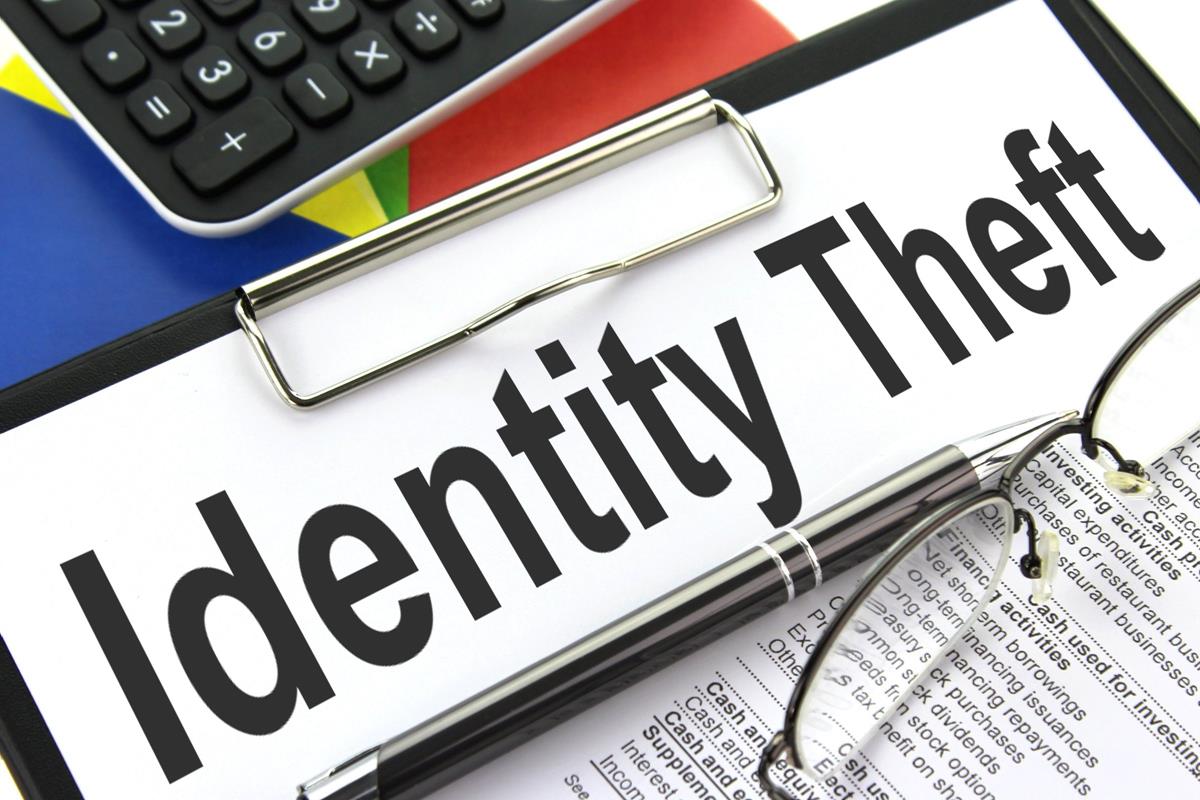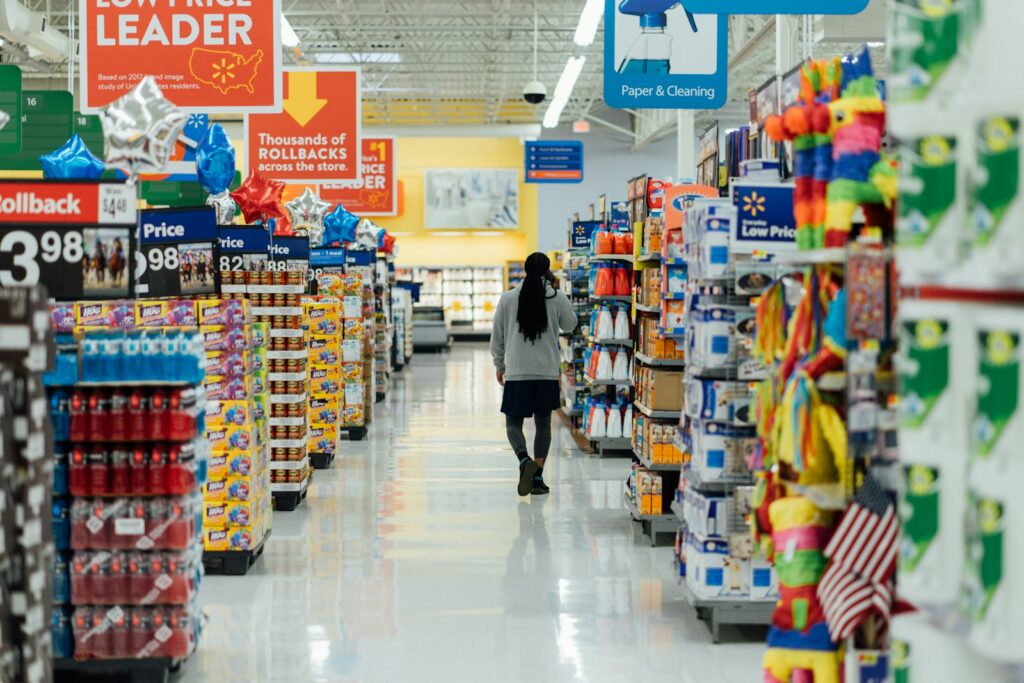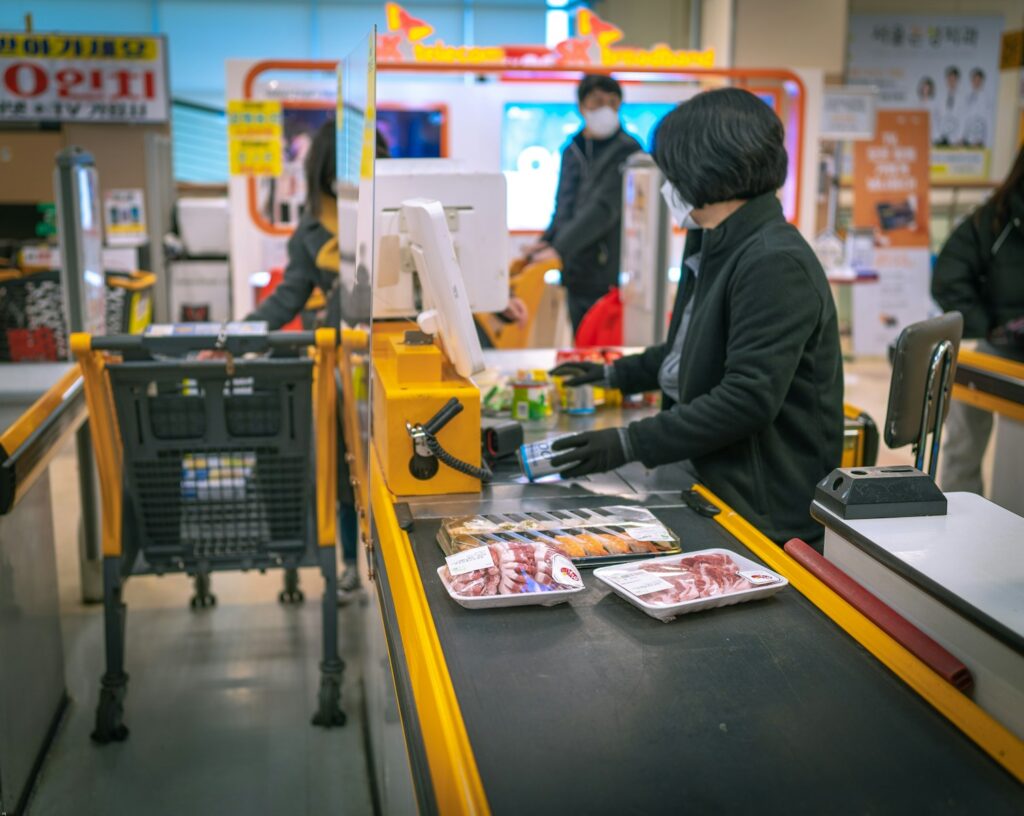
Seeing changes at the checkout lately? Self-checkout machines seemed everywhere. They promised shopping speed and convenience. For many, they worked great quickly. Zipping through felt like a small win.
It showed a faster future. Retail is seeing some big changes now. Large stores like Walmart make adjustments. Reports say some are pulling back.
This happens in places like Ohio and Missouri. They bring back regular cashiers. This change makes people wonder. What is really happening here? It’s not a random choice at all.
A spokesman said changes came after listening. They heard from customers and workers. They looked at shopping habits too. The goal is improving shopper happiness. They want better shopping trips. Service should feel fast and personal.

That’s a nice plan, isn’t it? Shoppers have different reactions. Some feel frustrated by the change. They say self-checkout is the quickest way.
Especially when you buy few items. It gave speed and independence. Getting back to your busy day was easy. Convenience was a big plus then. Other customers are very happy. They like returning to human help.
It makes shopping feel more personal. Talking to someone is nice. The store feels warmer and welcoming. Human connection helps make shopping pleasant. Walmart didn’t say theft is the main reason. But it’s part of the talk.
Read more about: Decoding the Costco Self-Checkout Experience: From Employee Assistance to the ‘COST CO’ Pronunciation Debate

Self-service can link to shoplifting. This is called shrinkage sometimes. Inventory loss comes from theft or damage. Fewer eyes mean more chances.
Items may not get scanned right. One study saw self-checkouts lose more. They lose items versus cashier lanes. This shows a clear connection maybe.
Some think Walmart is trying to cut losses. It is practical for any business. Protecting money is important. Serving customers matters too.
Read more about: Retailers Rethink Checkout as Theft Surges, Forcing Moves From Locked Meats to Fewer Self-Service Kiosks

Finding that right balance is key. Walmart is not the only one. Other stores rethink checkout plans. Dollar General pulled back self-service.
They cited high losses clearly. Target uses a different plan. They limit items at self-service. This change aims for faster service. Improving efficiency was the goal.
This highlights varied retail tactics. It isn’t one size fits all. Some stores reduce or remove machines. Others tweak usage rules instead.
Target says they won’t remove them. Their changes improved times and scores. But shoppers find the 10-item limit frustrating. Especially when cashier lines are long. Inconsistency makes people annoyed. Different philosophies clearly exist.
Read more about: Your Guide to the Power of Deload Weeks for Muscle Growth

Dollar General ties changes to losses. They remove machines from high-theft stores. They convert some to assistant use. Others limit items to five. This targets shrinkage and engagement. It aligns with what they think customers wants.
Five Below is also pulling back. They are moving to shopper assistance. Customers scan, employee finish the deal. This hybrid keeps scanning speed.
It adds human oversight and help. It’s interesting seeing these approaches. Stores grapple for best way forward. What does this mean for Walmart checkout?
Some places removed machines already. But Walmart says no national plans. They are testing and limiting lanes. Some lanes are for loyal members. Drivers for delivery also get them. This rewards loyal customers perhaps.
Read more about: Retailers Rethink Checkout as Theft Surges, Forcing Moves From Locked Meats to Fewer Self-Service Kiosks

It gives them faster access maybe. Decisions based on many factors. Feedback from staff and customers guides it. Shopping patterns matter too. Business needs in the area important. Theft is background noise perhaps.
Walmart stresses a wider view. It looks at customer experience closely. Employee input is considered. Local store needs are reviewed. It’s finding the right mix always.
They re-evaluate the strategy now. Not just abandoning the idea. Testing cashier-less tech is ongoing. Redesigning areas adds employee help. Consider the pros and cons now.
Read more about: Everyday Items People Say Are Now Too Expensive to Justify Buying

It’s clear why stores fine-tune. For stores, it saves labor costs. It helps move shoppers fast. Speed is a big operational plus.
During busy hours, this helps. Downside for stores is higher theft risk. Managing these areas still needs staff. Supervision is still required. An attendant needs be available. Help is needed for glitches or checks.
It needs different labor types. But labor is still required often. For us shoppers, speed is the draw. Independence feels really good. When it works, it is wonderful.

Scan, pay, and you are done. Quick trips are easy this way. Autonomy makes it appealing greatly. Go at your own pace scanning.
But issues can happen easily. Scan errors pop up sometimes. Finding produce codes is hard. Age checks cause delays too. Speed turns frustrating quickly then.
When you need help, attendant is busy. Convenience disappears at that moment. Self-checkout works best for small trips. Not for a full grocery cart.
Read more about: Retailers Rethink Checkout as Theft Surges, Forcing Moves From Locked Meats to Fewer Self-Service Kiosks

Experts agree stores won’t quit it. They will adjust usage instead. Recalibrating self checkout is happening. Not completely retreating from it. Stores learn trade-offs exist. Operational efficiency comes with them.
Result is a nuanced approach. Self-checkout is used strategically now. It finds its right store purpose. Self-checkout probably stays in some form. Most want to finish fast. A survey said 55% US adults prefer speed.
That need drives things greatly. Another survey says 44% US shoppers prefer self-checkout. Only 39% prefer traditional lines. 10% like cashierless experience only. These numbers show preference clearly. Self-checkout leads over traditional lines.
Read more about: Achieving Gorgeous Hair The Right Way to Use Purple Shampoo
Even if gap isn’t huge yet. These stats are telling, yes? They show customers want this option. It’s become standard now for many.
Stores want seamless experience options. But stores shouldn’t go all cashierless. Human element still important for many. Providing choices is important.
Don’t just replace one system. Speed is a primary reason for choice. Getting out fast is appreciated greatly. However, some prefer traditional lines. This survey found nearly third felt that.
Many items scanning takes too long. A cashier doing it is faster. This ties effectiveness to basket size. Stores should consider store format. Customer base matters for strategy. Convenience stores do well with kiosks.
Read more about: The Checkout Charity Phenomenon Understanding Impulse Giving in America

Shoppers buy few items there. Big stores and supermarkets differ. Hauls are often much larger there. Plenty of traditional lanes are needed. Match the technology to the mission.
Not just young shoppers use it. Many older adults are comfortable. 61% of baby boomers use it. This survey found surprisingly high numbers.
Don’t assume older people resist. Stores with older shoppers can test it. However, over half of boomers prefer human interaction. 39% always use human cashiers.

This is a crucial reminder for all. Many older shoppers are open to it. But many rely on traditional service. Stores need be careful not to over-index. Make sure traditional options stay open.
Ensure they are staffed adequately. Everyone needs options available. Belief it makes theft easier is big. Over two-thirds think self-checkout helps steal. This is a widespread perception greatly. It is significant for the public now.
The actual theft increase debated maybe. Same survey had eye-opening findings. 15% self-checkout users admitted stealing purposely. That number rises for younger groups. 21% millennials admit this behavior.
31% of Gen Zers admit stealing. They estimated goods averaged $60 value. True numbers could be even higher. Not everyone would admit stealing probably. These figures support theft concerns.
Read more about: Your Guide to the Power of Deload Weeks for Muscle Growth

Stores like Dollar General cite this reason. They used it for pullbacks sometimes. Context notes alarming reports too. Scams target self-checkout users lately. Skimmers found at stores and pumps worry. This adds another layer of concern.
Not just intentional stealing occurs. Risk of payment info being taken exists. Systems might present more chances. Criminals target unprotected terminals maybe. This worries customers greatly.
It’s a headache for retailers too. They need ensure systems are secure. Given the mixed picture now. What is takeaway for retailers here? Don’t ditch self-checkout completely maybe. Look for ways to make it safer.
Reduce issues and problems occurring. Better anti-theft measures can help. Integrate these into the process. Smarter technology is an option here. Maybe better monitoring from staff too. Attendants in the self-checkout area needed.
Read more about: Walmart’s Red Sticker Mystery: Shoppers Decode the New Anti-Skimmer Tactic and How to Stay Safe

Conversation isn’t total failure talk. How it fits strategy matters greatly. Context gives arguments for failure. Customer issues technical and impersonal. Increased theft is a problem here.
Job displacement concerns are valid. Arguments against failure exist. Convenience is a big plus. Speed for small baskets helps shoppers. Potential labor cost cut happens. Its role in technology evolution clear.
Truth is somewhere in the middle ground. It represents evolution happening now. Not an abandonment of the tech. Walmart re-evaluates its strategy. Not abandoning it is key here. They try different approaches now.
Read more about: Taylor Swift’s Denim Styling Trick at the Chiefs Game: Peak Millennial Fashion
Removing kiosks in some spots is done. Redesigning areas add employee help. Testing new tech continues also. Experimentation finds the best way now. Environment is changing rapidly. Key takeaways underline this point.
Balance tech convenience with security needs. Limiting self-checkout might reduce theft. But longer waits could happen without staff. Employee roles may shift over time. Consumer opinions are mixed always.
They influence shopping behavior greatly. Checkout experience is dynamic right now. Started simply for speed and ease. Evolved into complex balancing act today. Tech, satisfaction, roles, prevention all matter. Retailers like Walmart figure out future.
Paying for goods will look different. It involves more nuance now. Not just machines replacing workers. It is creating good experiences for everyone.
Read more about: The Absolute Ridiculus Fashion Trends That Left Us Scratching Our Heads
Related posts:
Costco rival removing all self-checkout machines… and replacing them with something even worse
Checkout Strategy: Insights and Recommendations
Walmart, Dollar General pull back on self-checkout, but here’s why the tech isn’t going anywhere





